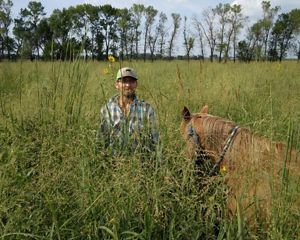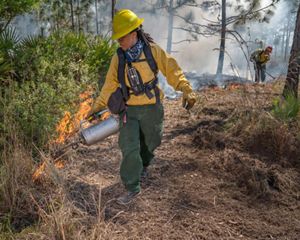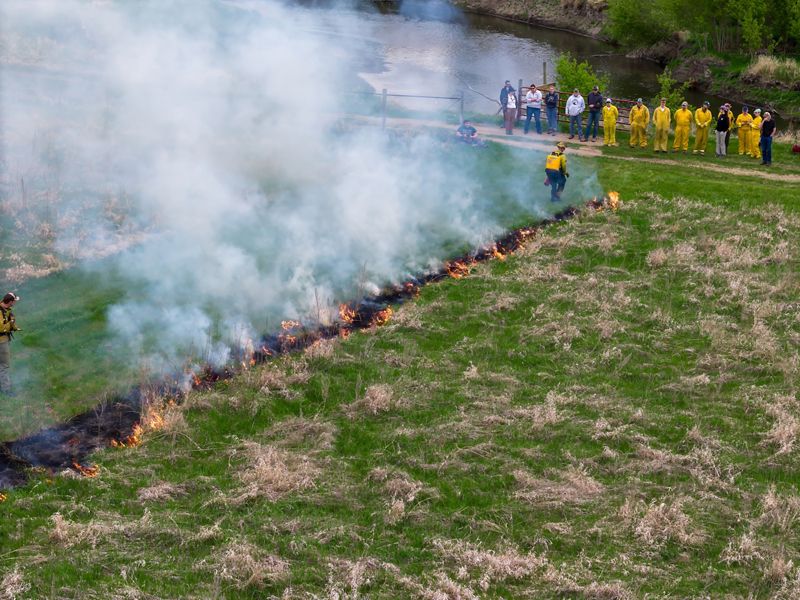
Prescribed Fire Nature Conservancy fire team members train a group of North Dakotans on how to safely conduct a prescribed burn. © Seth Owens
On a late spring day in Jamestown, North Dakota, an overcast sky threatened rain. A dozen landowners, land managers and conservation experts stood ready with drip torches and water sprayers in hand. They were gathered to practice conducting a prescribed burn on a few acres at the U.S. Geological Survey’s Northern Prairie Wildlife Research Center.
Fortunately, the rain held off, and the group was able to complete the burn as part of a Live Fire Workshop hosted by the North Dakota Prescribed Fire Cooperative, an assembly of state and federal agencies, nonprofits and landowners working to increase the practice of prescribed fire among private landowners in the state. Prior to burning, the group spent a few hours in a classroom learning the basics of creating a burn plan and understanding how fire behaves.
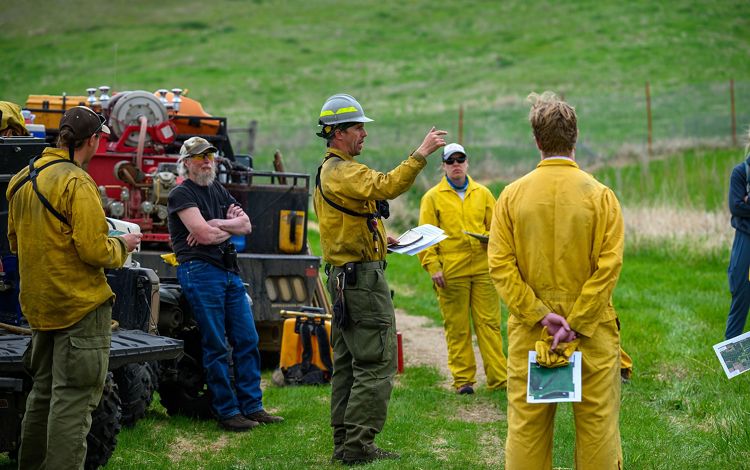
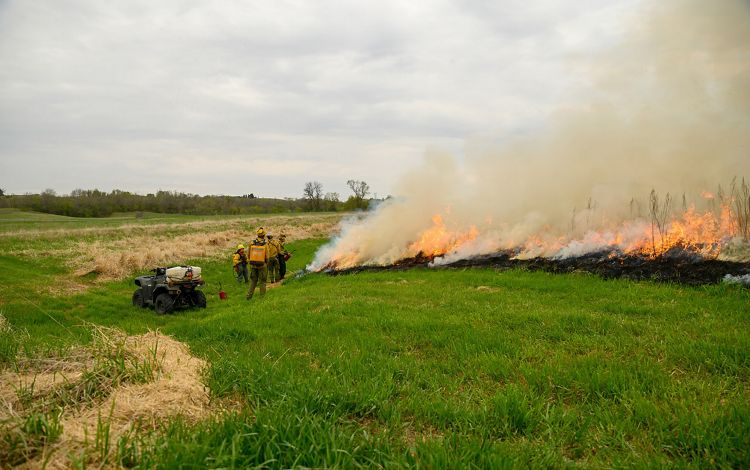
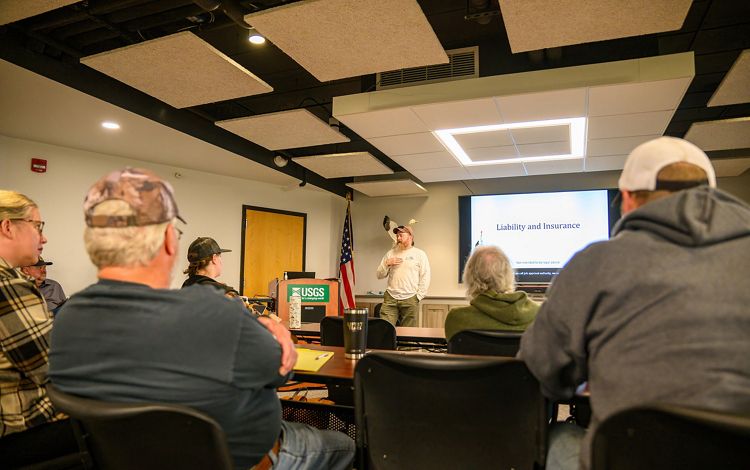
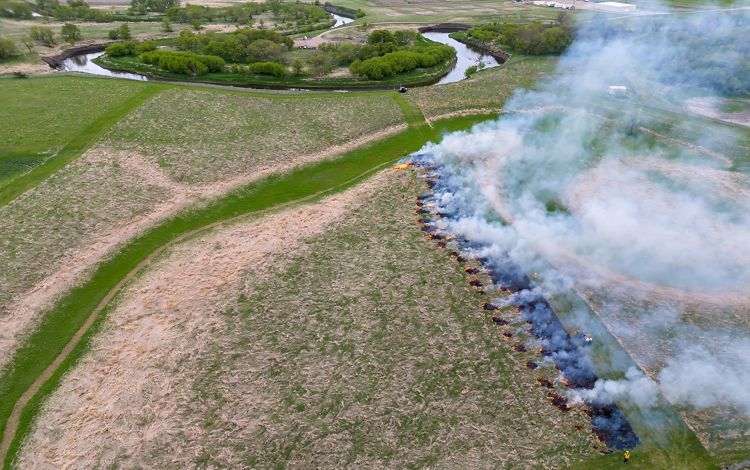
“There’s only so much you can learn in the classroom,” said Chris Gordon, fire manager for The Nature Conservancy in North Dakota. “So, we’re getting landowners out, getting their hands on the equipment, the drip torches, the Indian cans, the bladder bags, the hand tools. We’re letting them feel the heat, and maybe some of the smoke, too, and feel what it's like to do a burn. They can see that it’s not as scary as they’ve been led to believe, and it can be done safely and efficiently.”
From the tallgrass prairie in the east to the shortgrass prairie in the west, North Dakota is an icon of the Great Plains. These grasslands evolved to thrive under disturbances like grazing bison and fires that routinely swept through the landscape, until agriculture and real estate development spurred more than a century of fire suppression policies.
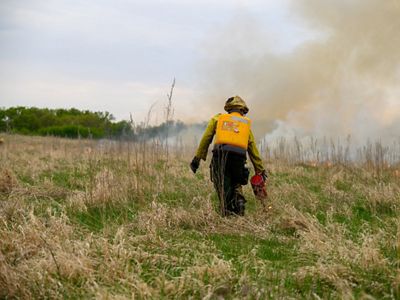
Today, more than 90 percent of the land in North Dakota is in private ownership. That complicates efforts to spread land management techniques such as prescribed fire widely across the state. Partners in the collective hope that if enough private landowners are safely and effectively conducting prescribed burns on their land, word will spread and the benefits will be felt across North Dakota’s grasslands.
Benefits of prescribed fire on private land
-
Kick back invasives
Cool season grasses like Kentucky bluegrass and smooth brome, and woody species like juniper and eastern red cedar can spread rapidly through a grassland. Routine fire helps keep these invasive plants from dominating a landscape.
-
Increase plant diversity
Spring and fall burns help open up grasslands and allow native grasses and forbs to get the sunlight they need to grow.
-
Stimulate new growth
Prescribed fire burns dead grasses that have built up, exposing the soil to sunlight and germinating seeds.
-
Support wildlife
Burns help stimulate healthier habitat, supporting birds, pollinators, amphibians and reptiles that call grasslands home.
-
Healthier forage for cattle
A more diverse grassland means better food for cattle. Fire can increase the number of flowering plants, which contain vital micronutrients, new research shows. Ranchers will often see cattle gravitating toward recently burned areas.
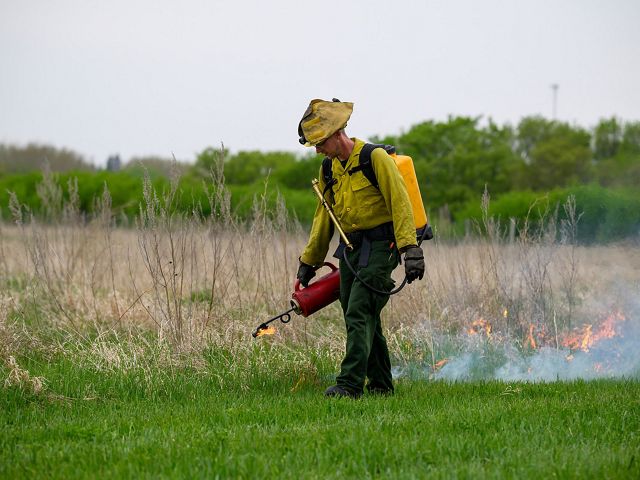
Get in touch!
To learn more about the North Dakota Prescribed Fire Cooperative and to see if prescribed fire is right for your land, fill out this interest form.
A Culture Shift
The cooperative includes The Nature Conservancy, Pheasants Forever, Ducks Unlimited, North Dakota Game and Fish, the U.S. Geological Survey, the Natural Resources Conservation Service, U.S. Fish and Wildlife, North Dakota State University Extension, Audubon Great Plains and the North Dakota Natural Resources Trust.
They are working to change the culture around fire in North Dakota. Many perceive fire as something scary, unpredictable or dangerous that could lead to uncontrolled wildfires. The goal of the cooperative is to help landowners feel comfortable and empowered to use fire safely and efficiently to achieve conservation goals.
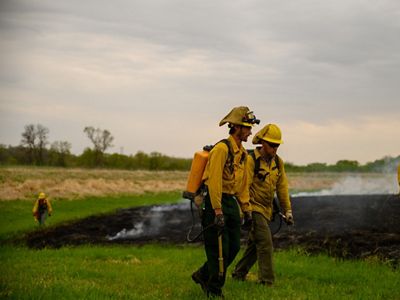
How Fire Stimulated the Growth of Horse-High Grass
A North Dakota rancher tried a burn on his land. The results were unbelievable.
Read moreLandowners can reach out to partners in the cooperative to ask questions, get help with creating burn plans and access resources, equipment and personnel to conduct prescribed burns.
Fill out this interest form to get updates on upcoming workshops.
We Can’t Save Nature Without You
Sign up to receive monthly conservation news and updates from North Dakota.

